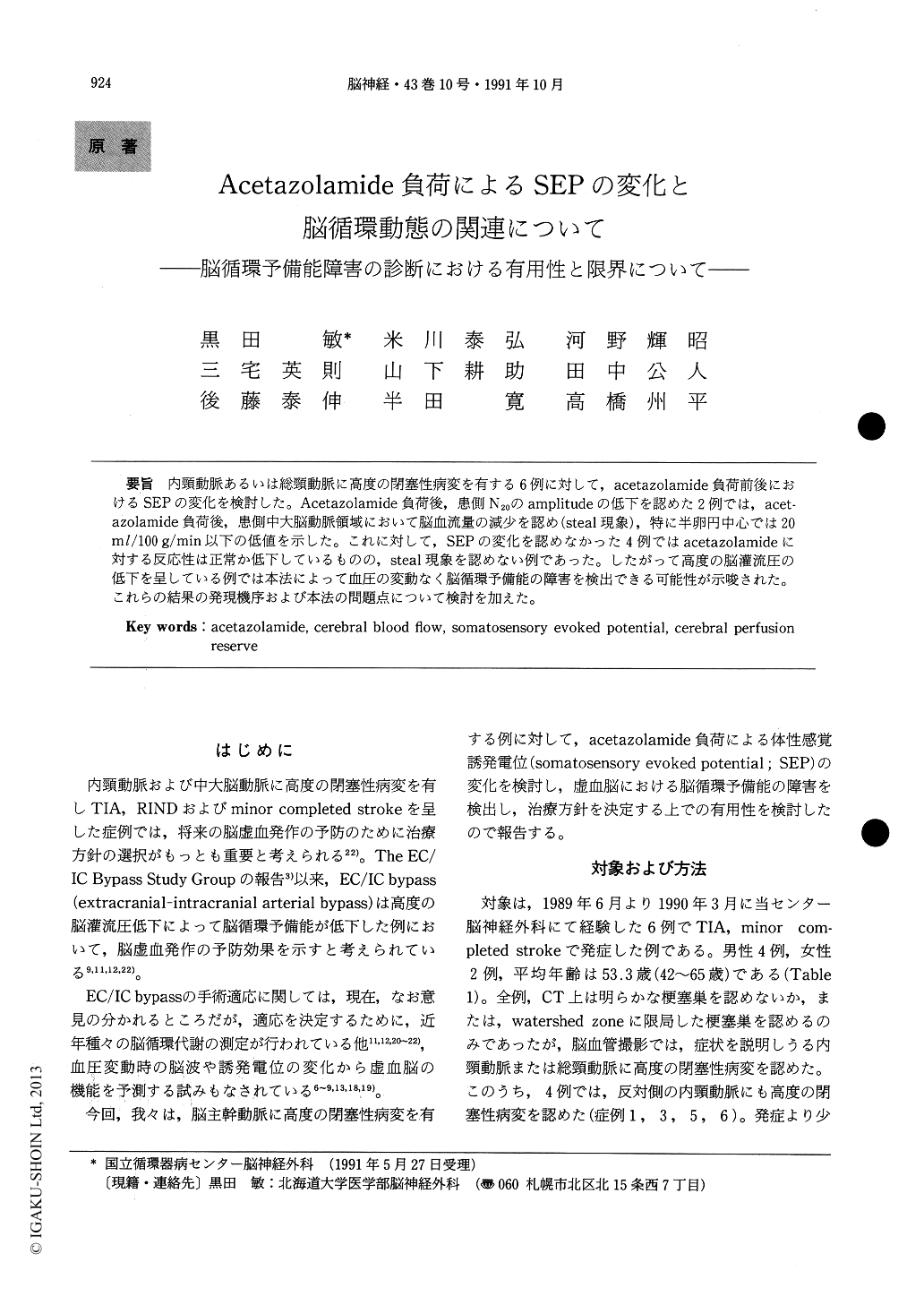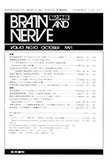Japanese
English
- 有料閲覧
- Abstract 文献概要
- 1ページ目 Look Inside
内頸動脈あるいは総頸動脈に高度の閉塞性病変を有する6例に対して,acetazolamide負荷前後におけるSEPの変化を検討した。Acetazolamide負荷後,患側N20のamplitudeの低下を認めた2例では,acet—azolamide負荷後,患側中大脳動脈領域において脳血流量の減少を認め(steal現象),特に半卵円中心では20ml/100g/min以下の低値を示した。これに対して,SEPの変化を認めなかった4例ではacetazolamideに対する反応性は正常か低下しているものの,steal現象を認めない例であった。したがって高度の脳灌流圧の低下を呈している例では本法によって血圧の変動なく脳循環予備能の障害を検出できる可能性が示唆された。これらの結果の発現機序および本法の問題点について検討を加えた。
The correlation between somatosensory evoked potential (SEP) and regional cerebral blood flow (rCBF) changes after acetazolamide administration was studied in six patients presented with transient ischemic attack (TIA) or minor completed stroke. All patients had no or only localized low density area on computed tomography, and severe occlusive disease in the ipsilateral common or internal carotid artery on cerebral angiography. In two patients with internal carotid artery occlusion, both marked decrease in ipsilateral N20 amplitude and prolonga-tion of ipsilateral N20 latency were observed from 5 -10 minutes after acetazolamide injection. These changes gradually improved and resolved 30-45 minutes after acetazolamide injection. In these cases, stable xenon CT revealed paradoxical rCBF decrease in the territory of the ipsilateral middle cerebral artery after acetazolamide injection. Espe-cially, rCBF in the ipslateral centrum semiovale fell to less than 20 ml/100 g/min. The other patients showed no change in SEPs and no paradoxical decrease in rCBF after acetazolamide injection. These results suggest that SEP test with aceta-zolamide loading could be valuable to evaluate a certain group of the patients with severely disturbed cerebral perfusion reserve in the carotid territory and suitable candidate for extracranial-intracranial arterial bypass (EC/IC bypass), although further investigations is needed.

Copyright © 1991, Igaku-Shoin Ltd. All rights reserved.


